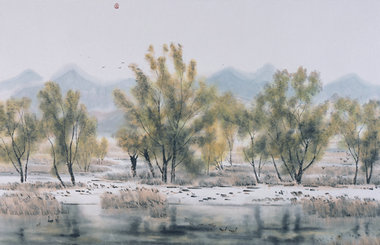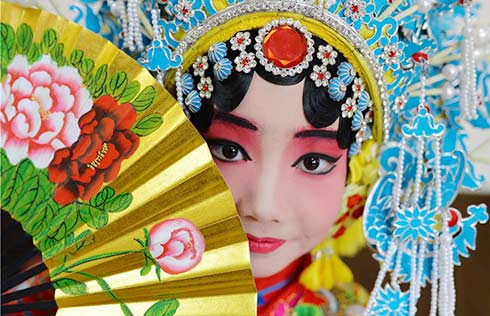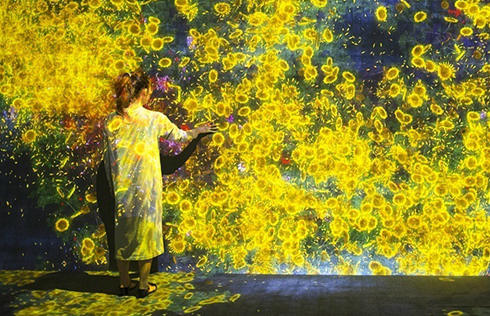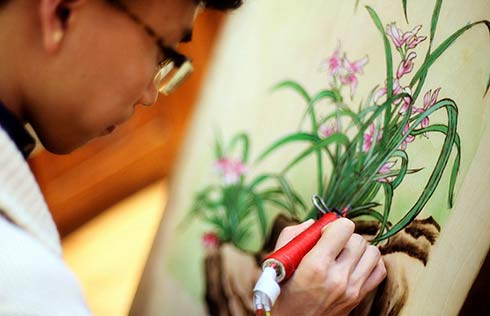

This scene spans a large promotional poster for From Titian to Goya, an exhibition held at the National Art Museum of China (NAMOC). Inside the exhibition, the real work, The Parasol, was on display. It is believed to be one of the best known and most exquisite tapestries by Francisco de Goya, an historical leader of Spanish art.
The artist proved the power of his imagination through the painting, in which he blended Italian Classicism with the novelty of French painting techniques.
The painting is but one gem among a treasure trove of 52 extraordinary specimens of the most distinguished works of Western art created between the 16th and 19th centuries. Presented by the prestigious Prado National Museum (Museo Nacional del Prado) in Madrid, these works' arrival in Beijing marked the celebration of the Year of Spain in China.

The exceptionally international audience that attended the exhibition on the opening weekend was amazed by the displayed works, the creators of which remain little known among Chinese.
Chinese visitors were particularly intrigued by the traditional attire of the paintings' subjects, and many commented that some of these fashions had made their way back into the mainstream.
And even more discussed the possibility of making trips to Spain, where the Prado National Museum falls high on the list of most tourism itineraries.
"Every painting is an invaluable masterpiece," said Juan J. Luna, curator and head of the Department of the 18th Century Painting of the Prado. "We hope the exhibition will become the Chinese people's starting point for getting to know Madrid and understand Spain."
The display at the NAMOC showcased celebrity effigies, religious and historical subjects, mythological anecdotes, secular allegories, still-life works and landscapes.
The first hall introduces the history, architectural features and collection of the 200-year-old Prado.
According to the chronological arrangement of the hall, visitors first encountered the works of Titian, master of he 16th-century Venetian School.
The hall dedicated to the Renaissance highlights Titian's Venus and Cupid with an Organist and his portrait Philip II. Completed between 1552-53, the portrait is the oldest painting on show.
The next section juxtaposed the Italian, Flemish, French and Spanish schools of painting.
Here, audiences could contemplate two works featuring mythological subject matter by Peter Paul Rubens, the best-known Flemish artist. Nymphs and Satyrs demonstrates well Rubens' debt to Titian. The Venetian forms are obvious in both detail and composition, while Saturn Devouring his Son demonstrates the maturity of his later art.



